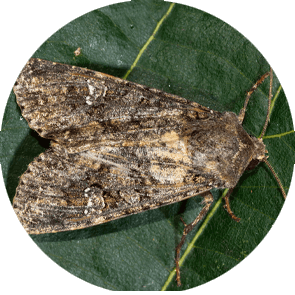


| Latin Name | Mamestra brassicae |
| Common Name | Cabbage moth |
| Biology | Adults are nocturnal and strongly attracted to black light traps and sugar-vinegar solutions, laying eggs in clusters on the undersides of leaves. Larvae are polyphagous with 6 instars: young larvae cluster to feed, while older larvae disperse to cause damage, chewing holes or notches in leaves and even gnawing on leafy heads. This pest is prevalent in spring and autumn, posing a significant threat to Brassicaceae vegetables. |
| Damage | This pest primarily damages cruciferous crops such as cabbages, Chinese cabbages, radishes, and rapeseed. |
| Distribution Regions | Eurasian temperate regions |
| Monitoring | Pheromone lures mimic natural sex pheromones to attract male insects into specialized traps for population monitoring and suppression. As a core IPM component, monitoring enables early risk detection and targeted control. Mass trapping reduces mating opportunities to curb offspring populations. Protocols: ●Use only with matched traps. ●15-45 traps/hectare,replace/replenish every 4-6 weeks. ●Wear gloves or wash hands with detergent when switching lure types. ●Refer to trap-specific hanging instructions. |
| Recommended Traps | Delta Trap, Wing Trap |

分享您的联系信息,即可获得精准匹配的信息素解决方案。如果我们现有的产品组合缺乏最佳匹配,我们的合成化学团队将启动定制开发——从分子结构设计到规模化生产。